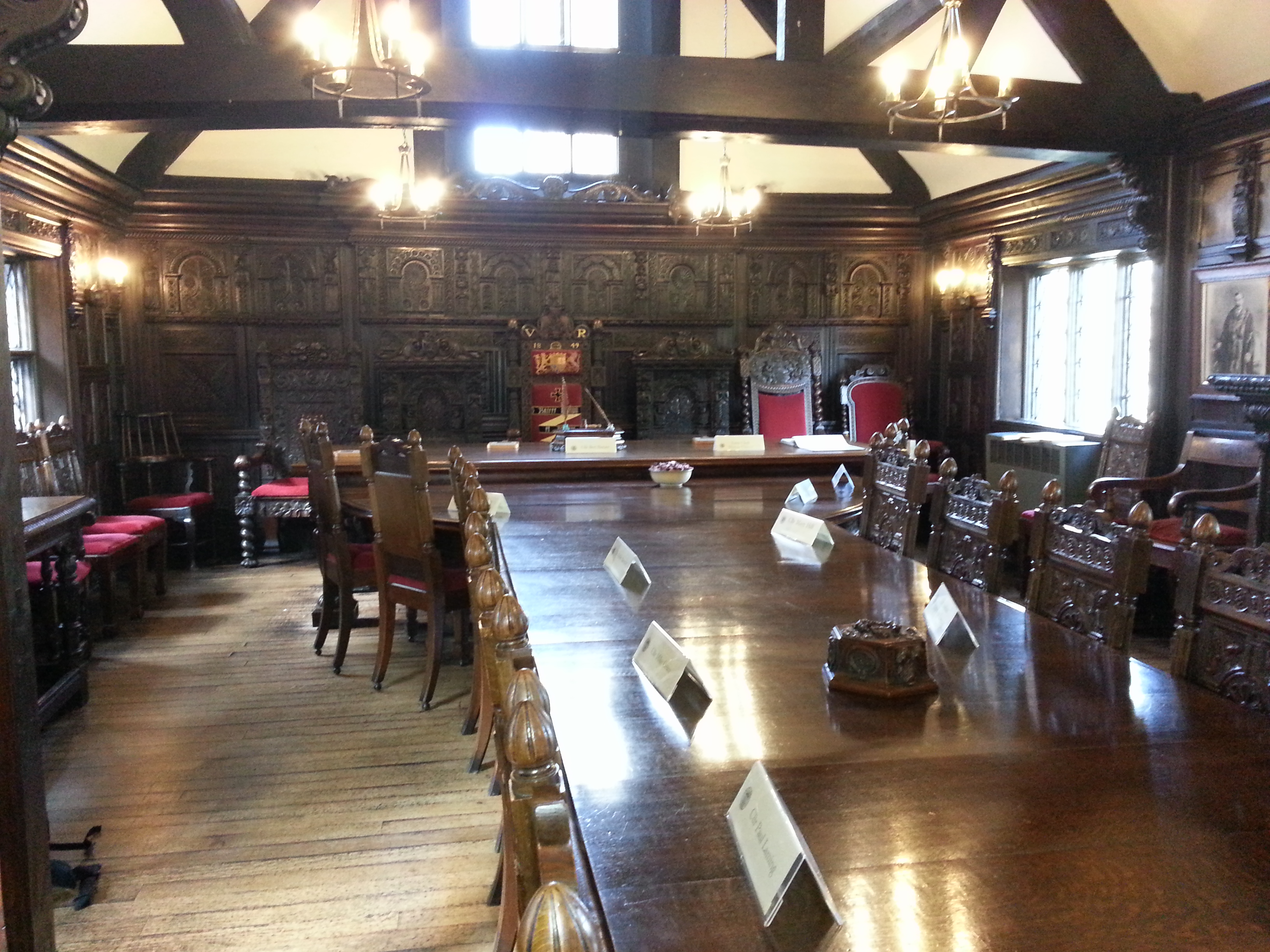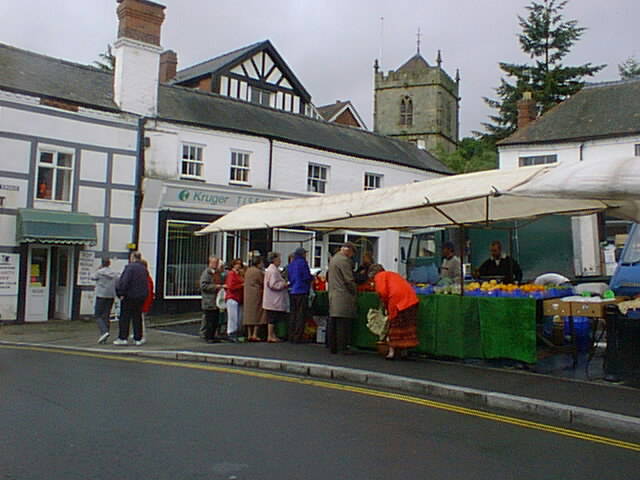|
Stretton Westwood
Stretton Westwood is a hamlet in Shropshire, England. It is located in the parish of Much Wenlock and is two miles southwest of the town, on the B4371 road to Church Stretton; its name derives from it being on the road to Stretton. It lies near to Wenlock Edge and there are a number of quarries in the vicinity, some of which are operational whilst the rest are now disused. Westwood is the general name for the area; close by to Stretton Westwood, but on the road to Bourton rather than to Church Stretton, is the smaller hamlet of Bourton Westwood, also in Much Wenlock parish. There was once a Westwood Halt railway station Westwood Halt railway station was a station in Stretton Westwood, Shropshire, England. The station was opened on 7 December 1935 and closed to passengers in 1951. References Further reading * Disused railway stations in Shropshi ..., on the now closed railway line. Villages in Shropshire Much Wenlock {{Shropshire-geo-stub ... [...More Info...] [...Related Items...] OR: [Wikipedia] [Google] [Baidu] |
Much Wenlock
Much Wenlock is a market town and parish in Shropshire, England, situated on the A458 road between Shrewsbury and Bridgnorth. Nearby, to the northeast, is the Ironbridge Gorge, and the new town of Telford. The civil parish includes the villages of Homer (1 mile north of the town), Wyke (2 miles northeast), Atterley (2 miles southeast), Stretton Westwood (2 miles southwest) and Bourton (3 miles southwest). The population of the civil parish, according to the 2001 census, was 2,605, increasing to 2,877 at the 2011 Census. Notable historic attractions in the town are Wenlock Priory and the Guildhall. The Wenlock Olympian Games established by William Penny Brookes in 1850 are centred in the town. Brookes is credited as a founding father of the modern Olympic Games, and one of the London 2012 Summer Olympics mascots was named Wenlock after the town. Toponym Much Wenlock is historically the chief town of the ancient borough of Wenlock. "Much" was added to distinguish it from ... [...More Info...] [...Related Items...] OR: [Wikipedia] [Google] [Baidu] |
Shropshire
Shropshire (; alternatively Salop; abbreviated in print only as Shrops; demonym Salopian ) is a landlocked historic county in the West Midlands region of England. It is bordered by Wales to the west and the English counties of Cheshire to the north, Staffordshire to the east, Worcestershire to the southeast, and Herefordshire to the south. A unitary authority of the same name was created in 2009, taking over from the previous county council and five district councils, now governed by Shropshire Council. The borough of Telford and Wrekin has been a separate unitary authority since 1998, but remains part of the ceremonial county. The county's population and economy is centred on five towns: the county town of Shrewsbury, which is culturally and historically important and close to the centre of the county; Telford, which was founded as a new town in the east which was constructed around a number of older towns, most notably Wellington, Dawley and Madeley, which is today th ... [...More Info...] [...Related Items...] OR: [Wikipedia] [Google] [Baidu] |
Ludlow (UK Parliament Constituency)
Ludlow is a constituency in Shropshire represented in the House of Commons of the UK Parliament since 2005 by Philip Dunne, a member of the Conservative Party. History From its 1473 creation until 1885, Ludlow was a parliamentary borough. It was represented by two burgesses until 1868, when it was reduced to one member. The seat saw a big reduction in voters between 1727 when 710 people voted to the next contested election in 1812 when the electorate was below 100. The 1832 Reform Act raised the electorate to 300-400. The parliamentary borough was abolished in 1885, and the name transferred to the new county "division" (with lower electoral candidates' expenses and a different returning officer) whose boundaries were expanded greatly to become similar to (and a replacement to) the Southern division of Shropshire. The seat was long considered safe for the Conservatives with the party winning by large majorities from the 1920s until 1997 when the majority was reduced to u ... [...More Info...] [...Related Items...] OR: [Wikipedia] [Google] [Baidu] |
Hamlet (place)
A hamlet is a human settlement that is smaller than a town or village. Its size relative to a Parish (administrative division), parish can depend on the administration and region. A hamlet may be considered to be a smaller settlement or subdivision or satellite entity to a larger settlement. The word and concept of a hamlet has roots in the Anglo-Norman settlement of England, where the old French ' came to apply to small human settlements. Etymology The word comes from Anglo-Norman language, Anglo-Norman ', corresponding to Old French ', the diminutive of Old French ' meaning a little village. This, in turn, is a diminutive of Old French ', possibly borrowed from (West Germanic languages, West Germanic) Franconian languages. Compare with modern French ', Dutch language, Dutch ', Frisian languages, Frisian ', German ', Old English ' and Modern English ''home''. By country Afghanistan In Afghanistan, the counterpart of the hamlet is the Qila, qala (Dari language, Dari: ... [...More Info...] [...Related Items...] OR: [Wikipedia] [Google] [Baidu] |
Civil Parishes In England
In England, a civil parish is a type of Parish (administrative division), administrative parish used for Local government in England, local government. It is a territorial designation which is the lowest tier of local government below districts of England, districts and metropolitan and non-metropolitan counties of England, counties, or their combined form, the Unitary authorities of England, unitary authority. Civil parishes can trace their origin to the ancient system of Parish (Church of England), ecclesiastical parishes, which historically played a role in both secular and religious administration. Civil and religious parishes were formally differentiated in the 19th century and are now entirely separate. Civil parishes in their modern form came into being through the Local Government Act 1894, which established elected Parish councils in England, parish councils to take on the secular functions of the vestry, parish vestry. A civil parish can range in size from a sparsely ... [...More Info...] [...Related Items...] OR: [Wikipedia] [Google] [Baidu] |
Church Stretton
Church Stretton is a market town in Shropshire, England, south of Shrewsbury and north of Ludlow. The population in 2011 was 4,671.National Statistics Church Stretton 2011 population area and density The town was nicknamed Little Switzerland in the late Victorian and period for its landscape, and became a health resort. [...More Info...] [...Related Items...] OR: [Wikipedia] [Google] [Baidu] |
Wenlock Edge
Wenlock Edge is a limestone escarpment near Much Wenlock, Shropshire, England and a site of special scientific interest because of its geology. It is over long, running southwest to northeast between Craven Arms and Much Wenlock, and is roughly 1,083 feet above sea level. The deciduous woodland which runs along it covers much of the steep slopes of the escarpment and in parts it is very well preserved. It was featured on the 2005 TV programme ''Seven Natural Wonders'' as one of the wonders of the Midlands. Wenlock Edge contains many interesting features such as Flounders' Folly, Wilderhope Manor and Shipton Hall and waymarked walks such as the Shropshire Way and bridleways such as the Jack Mytton Way. It is a popular area for hillwalking, cycling, mountain biking and horseriding and is also frequented by tourists and sightseers. Robert Hart created a model forest garden from a small orchard on his farm called Highwood Hill in Wenlock Edge. Geology The "world famous ... [...More Info...] [...Related Items...] OR: [Wikipedia] [Google] [Baidu] |
Bourton, Shropshire
Bourton is a small village in Shropshire, England, southwest of Much Wenlock. It is part of the civil parish of Much Wenlock. Holy Trinity Church, the parish church, is of 12th century origin, but was extended in 1844. It is a Grade II* listed building. History Bourton was recorded in the Domesday Book as ''Burtune''. At the time of the Domesday Book in 1086 the manor of Bourton was held by Wenlock Priory within the hundred of Patton. Early in the 12th century the hundred was merged with Culvestan to form the hundred of Munslow, but in 1198 Bourton was transferred with other manors held by the priory to the hundredal jurisdiction of the Liberty of Wenlock (also known as Wenlock Franchise). The principal court of the liberty met at Bourton, and the liberty outside the township of Much Wenlock was known as Bourton hundred by the 1220s. In 1468 Edward IV granted the men of Much Wenlock a charter forming the Borough of Wenlock. Over the years the borough asserted jurisdicti ... [...More Info...] [...Related Items...] OR: [Wikipedia] [Google] [Baidu] |
Westwood Halt Railway Station
Westwood Halt railway station was a station in Stretton Westwood, Shropshire, England. The station was opened on 7 December 1935 and closed to passengers in 1951. References Further reading * Disused railway stations in Shropshire Railway stations in Great Britain opened in 1935 Railway stations in Great Britain closed in 1951 Former Great Western Railway stations {{WestMidlands-railstation-stub ... [...More Info...] [...Related Items...] OR: [Wikipedia] [Google] [Baidu] |
Villages In Shropshire
A village is a clustered human settlement or community, larger than a hamlet but smaller than a town (although the word is often used to describe both hamlets and smaller towns), with a population typically ranging from a few hundred to a few thousand. Though villages are often located in rural areas, the term urban village is also applied to certain urban neighborhoods. Villages are normally permanent, with fixed dwellings; however, transient villages can occur. Further, the dwellings of a village are fairly close to one another, not scattered broadly over the landscape, as a dispersed settlement. In the past, villages were a usual form of community for societies that practice subsistence agriculture, and also for some non-agricultural societies. In Great Britain, a hamlet earned the right to be called a village when it built a church. [...More Info...] [...Related Items...] OR: [Wikipedia] [Google] [Baidu] |




